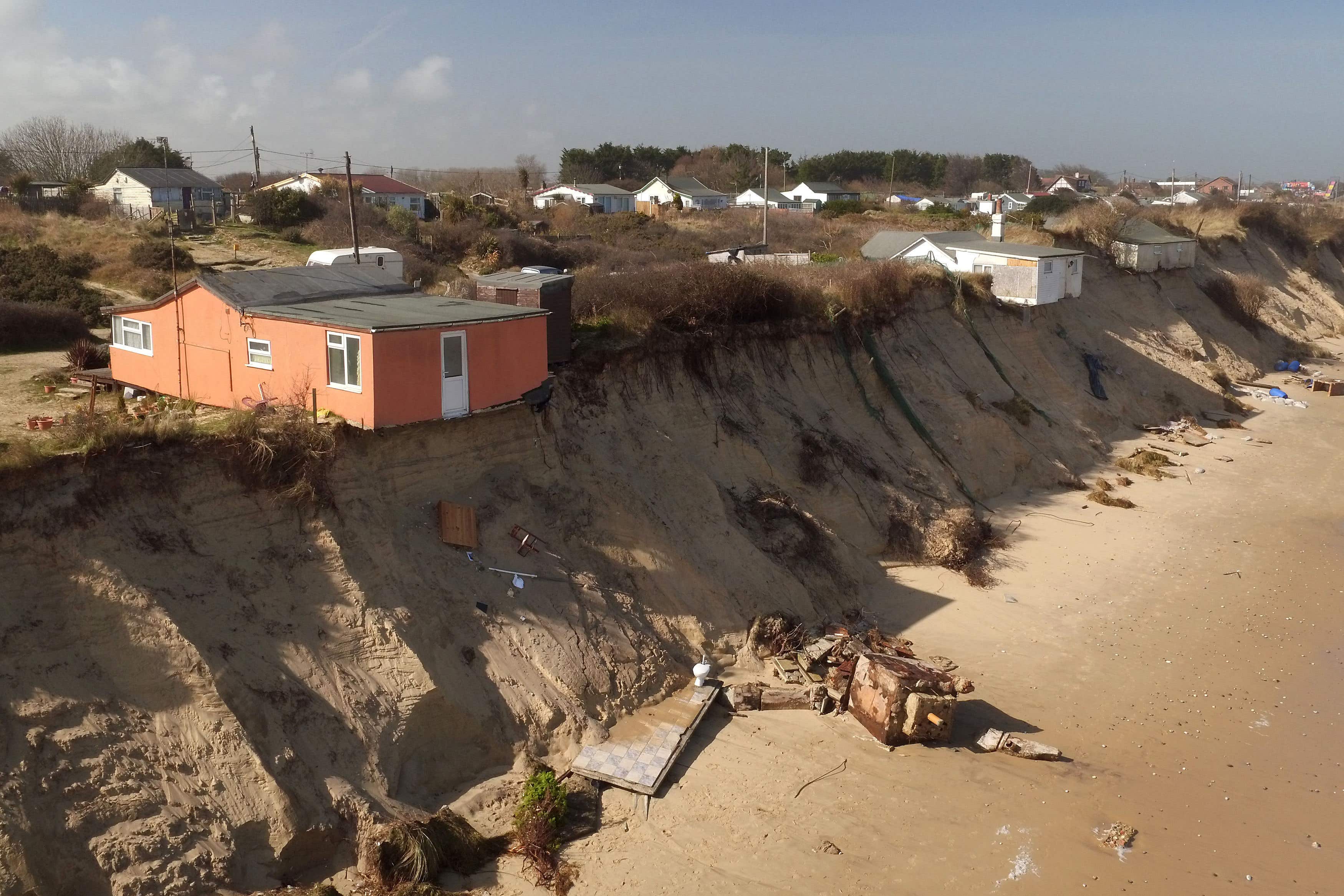Homes worth £600m could be lost to the sea this century, say campaigners
Climate action group One Home has identified 21 at-risk villages around the UK’s coastline.

Your support helps us to tell the story
From reproductive rights to climate change to Big Tech, The Independent is on the ground when the story is developing. Whether it's investigating the financials of Elon Musk's pro-Trump PAC or producing our latest documentary, 'The A Word', which shines a light on the American women fighting for reproductive rights, we know how important it is to parse out the facts from the messaging.
At such a critical moment in US history, we need reporters on the ground. Your donation allows us to keep sending journalists to speak to both sides of the story.
The Independent is trusted by Americans across the entire political spectrum. And unlike many other quality news outlets, we choose not to lock Americans out of our reporting and analysis with paywalls. We believe quality journalism should be available to everyone, paid for by those who can afford it.
Your support makes all the difference.Almost £600 million worth of coastal homes in England could be lost to the sea by 2100, according to a climate action group.
One Home identified 21 at-risk villages and hamlets and estimated how much coast could be lost there assuming that current policies on whether to defend, retreat or abandon sections of coastline are followed.
They used data from the Environment Agency’s National Coastal Erosion Risk Mapping (NCERM) dataset at 5% confidence, indicating a less than 5% chance of the coast being eroded further inland than the estimate.
Policies on whether to defend, retreat or abandon sections of coast are contained in shoreline management plans (SMPs), developed by coastal groups with members mainly from local councils and the Environment Agency.
The value of property damage, on the land that could be hit by coastal erosion by 2100, was estimated at £584 million using average local authority values or site-specific values from Rightmove, One Home said.
The group has compiled a map highlighting what shoreline management plans are in place in different areas of coast, and what the level of protection is.
The coastal communities identified by One Home that could lose the most homes are in Cornwall, Cumbria, Dorset, East Yorkshire, Essex, the Isle of Wight, Kent, Northumberland, Norfolk and Sussex.
Angela Terry, chief executive of One Home, said: “Sea levels are rising as global temperatures soar and so larger waves batter our coast during severe storms.
“These irreversible changes mean some cliff faces are crumbling fast.
“We can’t turn the tide or build a wall around the entire coast so we urgently need to help seaside communities to prepare for the damage that will come.
“Shoreline management plans are publicly available documents but most people are unaware of their existence.
“Many homeowners don’t know their properties are at risk or that decisions have been made about whether to protect them or not.
“SMPs are not statutory, so new developments can continue.
“Funding is not guaranteed so even where communities have been chosen to be saved, the money might not be there, giving people false hope that their home will be protected long term.
“One Home’s aim with this map is to explain SMPs in an easy-to-digest way so that homeowners are sufficiently informed to make timely decisions about their properties to reduce future harm.
“Currently, for those homes at risk, there is no compensation scheme available.
“Owners might be asked to pay to demolish their homes while still paying their mortgage.”
More than a third of England’s coastline has a designation of “no active intervention”, One Home said, meaning that nothing will be done.
The other two levels of protection in SMPs are “hold the line”, meaning that defences will be maintained and upgraded if funding is found, and “managed realignment” which involves moving or allowing the shoreline to retreat in a managed way.
An Environment Agency spokesperson said: “We know the devastating impact that flooding and coastal change can have, which is why improving the resilience of people and communities is our top priority.
“From 2015 to 2021, we invested £1.2 billion to better protect around 200,000 homes from coastal erosion and sea flooding.
“However, climate change means that our coast is changing at an accelerated rate, meaning in some places we and coastal authorities will need to help local communities adapt and transition away from the current coastline.
“We are working closely with communities and local authorities to provide support and guidance, including through the Coastal Accelerator Transition Programme.
“Anyone living, visiting or working along the coast can already find out about coastal risk, current and planned coastal management by going on gov.uk.”
To see One Home’s map, visit: https://onehome.org.uk/campaign/campaigns/coast/interactive-map/